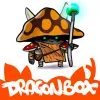Take a look inside 5 images
Kahoot! Geometry by DragonBox
Pros: Engaging puzzles encourage kids to explore important geometric concepts through gameplay.
Cons: Hints and practice opportunities are lacking.
Bottom Line: Kids build fundamental geometry skills as they play, but connections to classroom math will require teacher support.
Kahoot! Geometry by DragonBox provides a great opportunity to encourage kids to learn through exploration. Use it in the classroom to build on knowledge from more formal lessons. Kids could work in pairs or small groups, but when you register a user, the app asks whether the user is right- or left-handed -- so it’s a good idea to group kids accordingly. You could have kids explore a level and then follow up with the teacher's guide to discuss concepts. Then, have kids complete the level again as reinforcement.
Kahoot! Geometry by DragonBox begins with a simple, nicely animated background story about a monster taking over a tower, offered in 17 different languages. Kids have to collect critters in order to build an army and fight the monster. They do this by solving puzzles. Kids can choose from two challenges: normal or hard. Once they choose a challenge, kids work their way through 10 puzzles in order to progress to the next level. The levels are organized into seven chapters, and kids learn new powers, or rules, in each chapter. As kids solve the puzzles, they develop an understanding of different geometric concepts. However, the game does not review or reinforce the concepts directly, so if you want kids to be able to transfer what they learned to another learning environment, it's important to use the teacher resources on the developer's website.
Learning is based on the exploration of definitions, properties, and relationships of geometric shapes through Euclidean proof. By solving puzzles in Kahoot! Geometry by DragonBox, kids explore concepts including congruency, line segments, triangles (isosceles, right, scalene, and equilateral), quadrilaterals, circles, pairs of angles, and parallel and transverse lines. Each level progresses to a new concept that builds on the previous level. For example, kids learn the definition of a triangle in the first level by tapping three vertices to draw the three sides of a triangle. In later levels, kids learn about isosceles triangles and equilateral triangles by exploring their side lengths.
The critters in the puzzles that kids need to set free and collect appear in the same general form of the shapes that kids need to identify. This may not be obvious to some kids, so pointing this out could help those who are struggling as they try to solve the puzzles. Using the teacher's guide on the developer's website is essential if you want to reinforce skills and help kids fully understand what they are learning.












